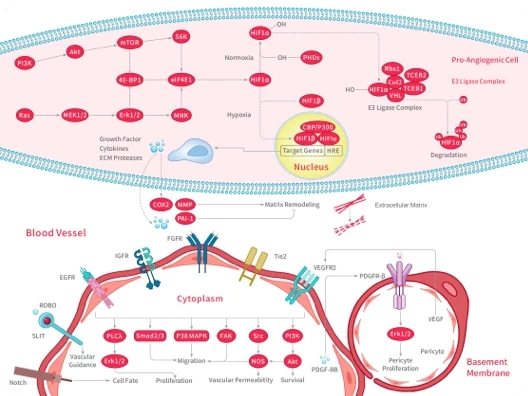- Remove All
 Your shopping cart is currently empty
Your shopping cart is currently empty
Shopping Cart
Butyrophilins
Butyrophilins are membrane proteins belonging to the immunoglobulin superfamily (Ig). Butyrophilin (Btn) genes constitute a subgroup of at least 10 genes in the Ig superfamily identified in human, mouse, cow, goat and other species. The eponymous Btn gene (BTN1A1 in humans; Btn1a1 in mouse) is highly expressed in the secretory epithelium of the mammary gland during lactation. Other homologues are predominantly expressed in skeletal muscle and the intestine and erythroid cells. In contrast, BTN2A1 and 2 and BTN3A1, 2, and 3 are widely expressed in many tissues, suggesting that the structural domains of Btn proteins may have both universal and tissue-specific functions.
BTN3A1 Protein, Human, Recombinant
TMPY-06663
BTN3A1 Protein, Human, Recombinant is expressed in HEK293 mammalian cells. The predicted molecular weight is 24.16 kDa and the accession number is NP_919423.1.
- $801
Size
QTY
BTN3A1 Protein, Human, Recombinant (hFc & Avi), Biotinylated
TMPJ-00316
Butyrophilin Subfamily 3 Member A1 (BTN3A1 CD277) is a type I transmembrane glycoprotein member of the Ig superfamily. It is expressed on a wide variety of immune cells. Similar to BTN3A2 and BTN3A3, BTN3A1 is composed of an extracellular N-terminal IgV and a membraneproximal IgC domain followed by a transmembrane domain and a cytoplasmic tail. These Ig domains are also found in B7 family costimulatory molecules, suggesting structural and functional similarities between the two protein families. BTN3A1 acts as a critical protein for the activation of Vγ9Vδ2 T cells following detection of distressed cells. The anti-tumor responses of Vγ9Vδ2 T cells may be enhanced with agonistic anti-BTNA3 antibodies.
- $355
Size
QTY
BTN2A2 Protein, Human, Recombinant (hFc & Avi), Biotinylated
TMPJ-01246
BTN2A2 Protein, Human, Recombinant (hFc & Avi), Biotinylated is expressed in HEK293 mammalian cells with C-Fc-Avi tag. The predicted molecular weight is 55-80 KDa and the accession number is Q8WVV5.
- $355
Size
QTY
BTNL9 Protein, Mouse, Recombinant (hFc)
TMPJ-01209
Butyrophilin-Like Protein 9 (BTNL9) is single-pass type I membrane protein member of the BTN MOG family that belongs to the immunoglobulin superfamily. BTNL9 consists of two domains: one B30.2 SPRY domain and one Ig-like V-type (immunoglobulin-like) domain. Human BTNL9 mRNA has been identified in adipose, lung, thymus, spleen, colon, and cardiac tissues, but its highest levels of expression were found in B cells. BTNL9 expression has also been found to be down-regulated in colon cancer tumors. BTNL9 Protein, Mouse, Recombinant (hFc) is expressed in HEK293 mammalian cells with C-Fc tag. The predicted molecular weight is 60-70 KDa and the accession number is Q8BJE2.
- $147
Size
QTY
BTN2A2 Protein, Human, Recombinant (hFc)
TMPJ-01247
BTN2A2 Protein, Human, Recombinant (hFc) is expressed in HEK293 mammalian cells with C-Fc tag. The predicted molecular weight is 55-80 KDa and the accession number is Q8WVV5.
- $184
Size
QTY
BTNL6 Protein, Mouse, Recombinant (His)
TMPJ-00439
Butyrophilin-like 6 (BTNL6) is a member of the BTN MOG Ig-superfamily and functions with BTNL1 as a regulator of immune cell proliferation. The Btnl6 gene is found only in mice. BTNL6 expression is coordinated as a heteromeric protein with BTNL1, and the presence of this complex is correlated with expansion of gamma δ T cells, especially those containing V gamma 7Vδ4 TCR. Btnl6 shows striking sequence similarity to Skint1; is also largely restricted to an epithelial tissue (the small intestine) replete with T cells. Our in-house studies showed BTNL6 co-inhibited anti-CD3 induced IL-2 secretion on CD3+ cells.
- $163
Size
QTY
BTN3A1 Protein, Human, Recombinant (His)
TMPY-04844
BTN3A1 Protein, Human, Recombinant (His) is expressed in HEK293 mammalian cells with His tag. The predicted molecular weight is 25.6 kDa and the accession number is O00481-2.
- $451
Size
QTY
BTN3A2 Protein, Human, Recombinant (His)
TMPY-04779
The three butyrophilin BTN3A molecules, BTN3A1, BTN3A2, and BTN3A3, are members of the B7 butyrophilin-like group of Ig superfamily receptors, which modulate the function of T cells. BTN3A2 is overexpressed in gastric tumors, and deletion of BTN3A2 inhibited proliferation, migration, and invasion of gastric cancer cells. The butyrophilin 3 (BTN3) receptors are implicated in the T lymphocytes regulation and present a wide plasticity in mammals. A thorough phylogenetic analysis reveals a concerted evolution of BTN3 characterized by a strong and recurrent homogenization of the region encoding the signal peptide and the immunoglobulin variable (IgV) domain in Hominoids, where the sequences of BTN3A1 or BTN3A3 are replaced by BTN3A2 sequence.
- $386
Size
QTY
BTN3A1 Protein, Human, Recombinant (E. coli, His)
TMPH-01021
Plays a role in T-cell activation and in the adaptive immune response. Regulates the proliferation of activated T-cells. Regulates the release of cytokines and IFNG by activated T-cells. Mediates the response of T-cells toward infected and transformed cells that are characterized by high levels of phosphorylated metabolites, such as isopentenyl pyrophosphate. BTN3A1 Protein, Human, Recombinant (E. coli, His) is expressed in E. coli expression system with N-10xHis tag. The predicted molecular weight is 30.2 kDa and the accession number is O00481.
- $198
Size
QTY
BTNL2 Protein, Human, Recombinant (Isoform 4, His)
TMPH-03822
BTNL2 Protein, Human, Recombinant (Isoform 4, His) is expressed in E. coli with C-6xHis. The accession number is Q9UIR0.
- $283
Size
QTY
BTNL4 Protein, Mouse, Recombinant (His)
TMPJ-00440
Butyrophilin-like 4, also known as BTLN4, BTN3A3 (human) and BTN3A2 (rat) is an approximately 65 kDa member of the butyrophilin family that may play a role in immune regulation. BTNL4 shows striking sequence similarity to Skint1, is also largely restricted to an epithelial tissue (the small intestine) replete with T cells, plays a role in T-cell responses in the adaptive immune response.
- $143
Size
QTY
BTN1A1 Protein, Human, Recombinant (His)
TMPY-06542
BTN1A1 Protein, Human, Recombinant (His) is expressed in HEK293 mammalian cells with His tag. The predicted molecular weight is 25.39 kDa and the accession number is Q4VAN1-1.
- $600
Size
QTY
BTNL9 Protein, Human, Recombinant (hFc)
TMPJ-01194
Butyrophilin-Like Protein 9 (BTNL9) is single-pass type I membrane protein member of the BTN MOG family that belongs to the immunoglobulin superfamily. BTNL9 consists of two domains: one B30.2 SPRY domain and one Ig-like V-type (immunoglobulin-like) domain. Human BTNL9 mRNA has been identified in adipose, lung, thymus, spleen, colon, and cardiac tissues, but its highest levels of expression were found in B cells. BTNL9 expression has also been found to be down-regulated in colon cancer tumors. BTNL9 Protein, Human, Recombinant (hFc) is expressed in HEK293 mammalian cells with C-Fc tag. The predicted molecular weight is 55-70 KDa and the accession number is Q6UXG8.
- $147
Size
QTY
BTNL9 Protein, Human, Recombinant (His)
TMPJ-01195
Butyrophilin-Like Protein 9 (BTNL9) is single-pass type I membrane protein member of the BTN MOG family that belongs to the immunoglobulin superfamily. BTNL9 consists of two domains: one B30.2 SPRY domain and one Ig-like V-type (immunoglobulin-like) domain. Human BTNL9 mRNA has been identified in adipose, lung, thymus, spleen, colon, and cardiac tissues, but its highest levels of expression were found in B cells. BTNL9 expression has also been found to be down-regulated in colon cancer tumors. BTNL9 Protein, Human, Recombinant (His) is expressed in HEK293 mammalian cells with C-6xHis tag. The predicted molecular weight is 18-30 KDa and the accession number is Q6UXG8.
- $91
Size
QTY
BTNL2 Protein, Mouse, Recombinant (His)
TMPJ-00698
Butyrophilin-like 2 (BTNL2) is a member of the BTN MOG Ig-superfamily and functions as a negative regulator of immune cell activation. Mouse BTNL2 is type I transmembrane glycoprotein that contains an extracellular domain (ECD), a transmembrane region and a short cytoplasmic domain. The ECD features two V-type Ig-like domains, two C-type Ig-like domains, and four glycosylation sites. BTNL2 is expressed in epithelial cells of the small intestine, colonic dendritic cells, and in cells of the lymph node. BTNL2 expression is upregulated in T cells following activation, a characteristic BTNL2 shares with the homologous B7 family of costimulatory molecules. BTNL2 negatively regulates T cells by inhibiting proliferation and inflammatory cytokine secretion. It also increases the expression of FoxP3 in T cells to promote regulatory T cell development. Single nucleotide polymorphisms in BTNL2 are associated with a risk for sporadic prostate cancer, rheumatoid arthritis, sarcoidosis, ulcerative colitis, and other inflammatory diseases.
- $110
Size
QTY
BTN2A2 Protein, Mouse, Recombinant (His)
TMPK-00584
Butyrophilin (BTN) genes encode a set of related proteins. Cell surface BTN2A2 protein, such as the B7 family molecule programmed death ligand 1, was upregulated upon activation of T cells.BTN2A2 is a co-inhibitory molecule that modulates T cell-mediated immunity.
- $418
Size
QTY
BTNL2 Protein, Human, Recombinant (hFc)
TMPH-03821
BTNL2 Protein, Human, Recombinant (hFc) is expressed in HEK293 Cells with C-hFc. The accession number is Q9UIR0.
- $198
Size
QTY
BTN1A1 Protein, Mouse, Recombinant (His)
TMPY-06537
BTN1A1 Protein, Mouse, Recombinant (His) is expressed in HEK293 mammalian cells with His tag. The predicted molecular weight is 25.96 kDa and the accession number is Q62556.
- $600
Size
QTY
BTN3A1 Protein, Human, Recombinant (His), Biotinylated
TMPY-05398
BTN3A1 Protein, Human, Recombinant (His), Biotinylated is expressed in HEK293 mammalian cells with His tag. The predicted molecular weight is 25.6 kDa and the accession number is O00481-2.
- $383
Size
QTY
BTN1A1 Protein, Human, Recombinant (hFc)
TMPY-06546
BTN1A1 Protein, Human, Recombinant (hFc) is expressed in HEK293 mammalian cells with hFc tag. The predicted molecular weight is 50.67 kDa and the accession number is Q4VAN1-1.
- $600
Size
QTY
BTN3A1 Protein, Human, Recombinant (His & Avi), Biotinylated
TMPK-00310
The three butyrophilin BTN3A molecules, BTN3A1, BTN3A2, and BTN3A3, are members of the B7 butyrophilin-like group of Ig superfamily receptors, which modulate the function of T cells. BTN3A1 controls activation of human Vγ9 Vδ2 T cells by direct or indirect presentation of self and nonself phosphoantigens (pAg). BTN3A1 Protein, Human, Recombinant (His & Avi), Biotinylated is expressed in HEK293 mammalian cells with C-His-Avi tag. The predicted molecular weight is 27.1 kDa and the accession number is O00481-1.
- $814
Size
QTY
BTN2A1 Protein, Human, Recombinant (His)
TMPJ-01199
Butyrophilin 2A1 (BTN2A1) is an approximately widely expressed and variably glycosylated type I transmembrane glycoprotein. Mature human Butyrophilin 2A1 consisits of a 220 amino acid (aa) extracellular domain with two immunoglobulin-like domains, a 21 aa transmembrane segment, and a 258 aa cytoplasmic domain. Alternative splicing generates additional isoforms of human Butyrophilin 2A1 that lack the first Ig like domain or transmembrane segment as well as isoforms with substitutions and deletions in the cytoplasmic region. BTN2A1 is widely expressed including on colonic epithelial cells, on immune cells, and in milk fat globules. It binds to the C-type lectin DCSIGN on monocytederived dendritic cells, and this interaction can be blocked by soluble gp130 from HIV. The polymorphism of BTN2A1 has been associated with metabolic syndrome, type II diabetes mellitus, chronic kidney disease, and hypertension.
- $110
Size
QTY
BTN3A1 Protein, Cynomolgus, Recombinant (His & Avi), Biotinylated
TMPK-00557
The three butyrophilin BTN3A molecules, BTN3A1, BTN3A2, and BTN3A3, are members of the B7 butyrophilin-like group of Ig superfamily receptors, which modulate the function of T cells. BTN3A1 controls activation of human Vγ9 Vδ2 T cells by direct or indirect presentation of self and nonself phosphoantigens (pAg). BTN3A1 Protein, Cynomolgus, Recombinant (His & Avi), Biotinylated is expressed in HEK293 mammalian cells with C-His-Avi tag. The predicted molecular weight is 26.5 kDa and the accession number is A0A330KWZ1.
- $814
Size
QTY
BTN3A1 Protein, Human, Recombinant (Yeast, His)
TMPH-01020
Plays a role in T-cell activation and in the adaptive immune response. Regulates the proliferation of activated T-cells. Regulates the release of cytokines and IFNG by activated T-cells. Mediates the response of T-cells toward infected and transformed cells that are characterized by high levels of phosphorylated metabolites, such as isopentenyl pyrophosphate. BTN3A1 Protein, Human, Recombinant (Yeast, His) is expressed in yeast with N-6xHis tag. The predicted molecular weight is 26.2 kDa and the accession number is O00481.
- $231
Size
QTY
BTN3A1 Protein, Human, Recombinant (hFc)
TMPY-01123
BTN3A1 Protein, Human, Recombinant (hFc) is expressed in HEK293 mammalian cells with hFc tag. The predicted molecular weight is 50.9 kDa and the accession number is O00481-2.
- $700
Size
QTY
BTN3A3 Protein, Human, Recombinant (mFc)
TMPY-04019
BTN3A3 Protein, Human, Recombinant (mFc) is expressed in HEK293 mammalian cells with mFc tag. The predicted molecular weight is 50 kDa and the accession number is O00478-1.
- $600
Size
QTY
BTN3A2 Protein, Human, Recombinant (His & Avi), Biotinylated
TMPJ-00219
Butyrophilin subfamily 3 member A2, also known as BT3.2, BTF3, BTF4 and BTN3A2, is a single-pass type I membrane protein. It is a member of the butyrophilin (BTN) family and the immunoglobulin (IG) superfamily. Mature human BTN3A2 is a 305 amino acid (aa) glycoprotein. It contains a 219 aa extracellular region with one V-type Ig-like domain, and a 65 aa cytoplasmic tail. The cytoplasmic region undergoes phosphorylation on two serines. There are three potential splice forms. BTN3A2 is postulated to be expressed on immune-related cells, as it has a structural similarity to MHC and CD80 CD86 molecules. It plays a role in T-cell responses in the adaptive immune response and inhibits the release of IFNG from activated T-cells.
- $355
Size
QTY
BTN3A2 Protein, Human, Recombinant (His & Avi)
TMPK-00224
BTN3A2 BT3.2 butyrophilin mRNA expression by tumoral cells was previously identified as a prognostic factor in a small cohort of high grade serous epithelial ovarian cancer (HG-EOC).In conclusion, BT3.2 protein is a potential prognostic biomarker for the identification of HG-EOC patients with better outcome. In contrast, high CD206 CD68 expression is associated with high risk of disease progression.
- $418
Size
QTY
BTN1A1 Protein, Human, Recombinant (His & Avi)
TMPK-00958
Butyrophilin 1A1 (BTN1A1) is one of the membrane proteins that surrounds LD,BTN1A1 plays an important role in regulating LD synthesis via a mechanism involving membrane phospholipid composition.
- $418
Size
QTY
BTN1A1 Protein, Human, Recombinant (His & Avi), Biotinylated
TMPY-06543
BTN1A1 Protein, Human, Recombinant (His & Avi), Biotinylated is expressed in HEK293 mammalian cells with His and Avi tag. The predicted molecular weight is 27.20 kDa and the accession number is Q4VAN1-1.
- $600
Size
QTY
BTN3A3 Protein, Human, Recombinant (His)
TMPY-03967
BTN3A3 Protein, Human, Recombinant (His) is expressed in HEK293 mammalian cells with His tag. The predicted molecular weight is 25 kDa and the accession number is O00478-1.
- $386
Size
QTY
BTN3A1 Protein, Cynomolgus, Recombinant (His & Avi)
TMPK-00556
The three butyrophilin BTN3A molecules, BTN3A1, BTN3A2, and BTN3A3, are members of the B7 butyrophilin-like group of Ig superfamily receptors, which modulate the function of T cells. BTN3A1 controls activation of human Vγ9 Vδ2 T cells by direct or indirect presentation of self and nonself phosphoantigens (pAg). BTN3A1 Protein, Cynomolgus, Recombinant (His & Avi) is expressed in HEK293 mammalian cells with C-His-Avi tag. The predicted molecular weight is 26.5 kDa and the accession number is A0A330KWZ1.
- $487
Size
QTY
Go to page 1
Page of 1

Copyright © 2015-2025 TargetMol Chemicals Inc. All Rights Reserved.











